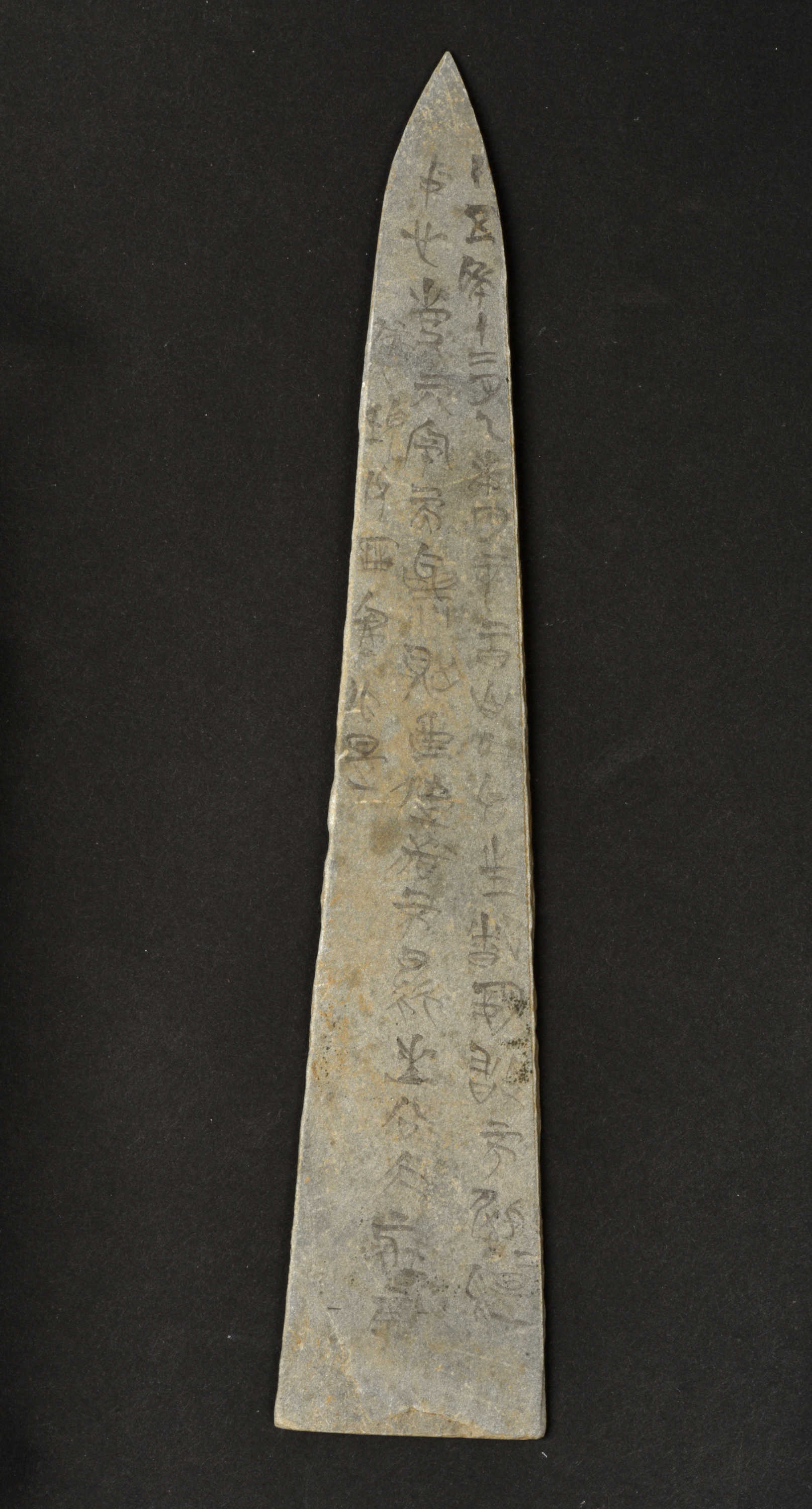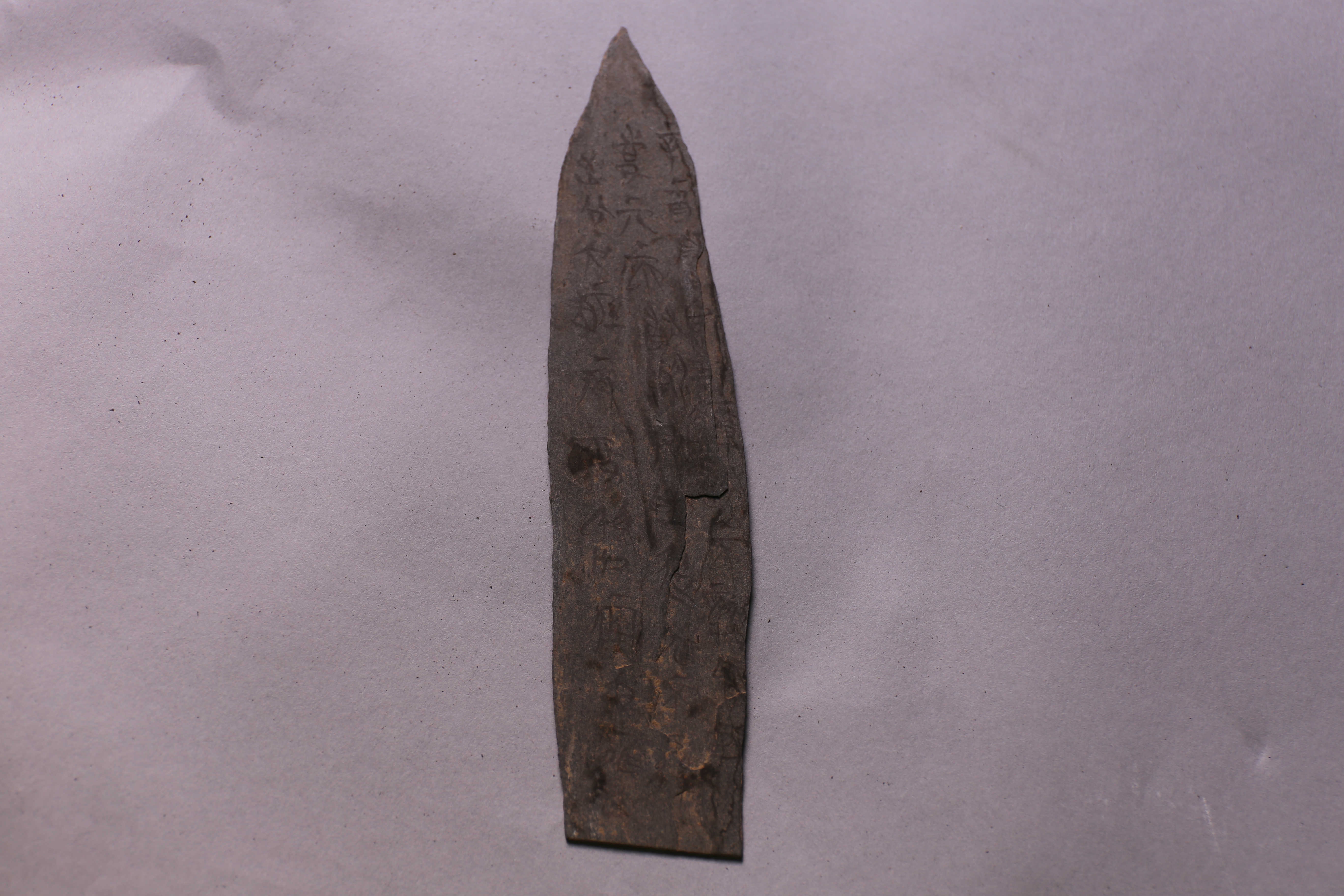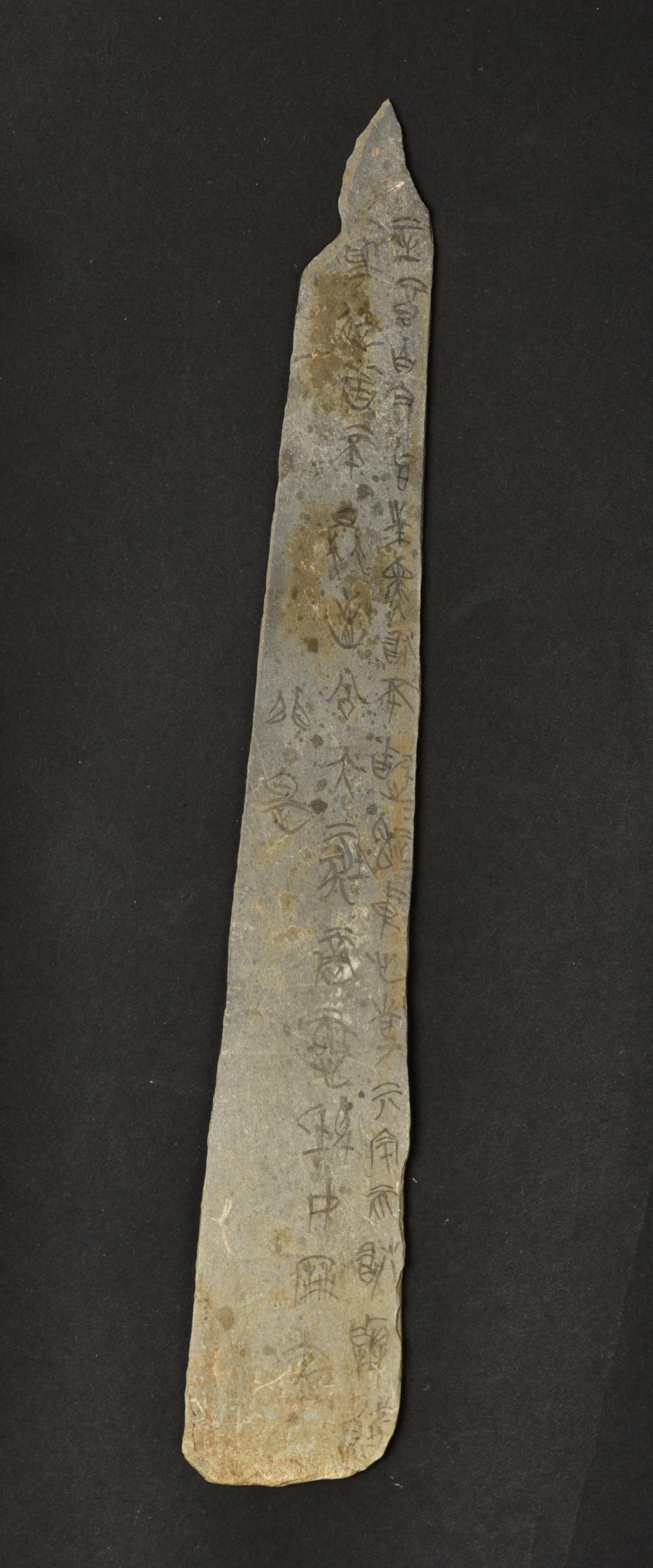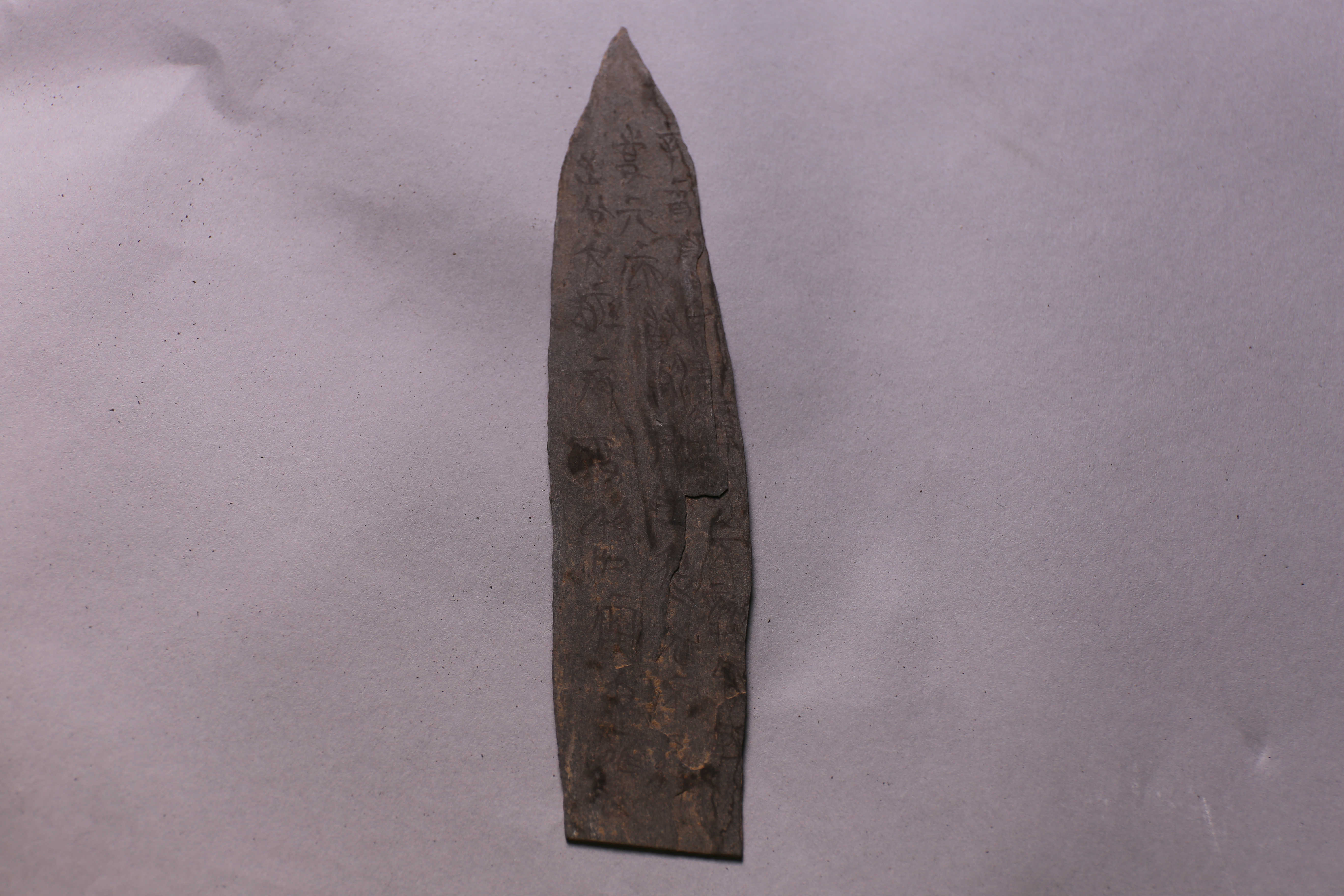


Date: Spring and Autumn Period (770-476 BC)
Provenance: Unearthed at Xizhangji village, Wenxian county, Jiaozuo, Henan province, 1980
Measurements:
Left one: Height: 19.5 cm, Bottom width: 3.8 cm, Thickness: 0.2 cm
Middle one: Height: 15 cm, Bottom width: 3 cm, Thickness: 0.1 cm
Right one: Height: 23.2 cm, Bottom width: 3.6 cm, Thickness: 0.13 cm
The gui tablet, a special ceremonial object in ancient China, derived its form from the stone spade and stone axe. It features a strip-formed design with a flat and straight lower end and an equilateral triangle top. The stone gui was predominantly used for ceremonial occasions, such as in regular reports to monarchs by the dukes of vassal states, sacrificial ceremonies, and funerals. The stone gui was popular during the Shang Dynasty (1600-1046 BC), yet was superseded by the emergence of the jade gui.
In 1980 in Xizhangji viliage, Jiaozuo, archaeologists unearthed more than 10,000 stone gui tablets from a treaty site dating to the Spring and Autumn Period. These tablets are three of the findings.
The tablet inscriptions were written in ink, displaying distinct styles indicative of multiple authors. The text of the oaths is generally written from top to bottom, from right to left. The characters are of various styles and convey the general idea that "There is an edict on the gui tablet: from now on, I dare not disloyally serve His Majesty. In case of engaging in a plot with other conspirators, spirits of the deceased kings of the Jin State in the heaven would scrutinize me and wipe out my clan."
Through research, it is determined that the time of the edict is supposed to be around the fifteenth year of the reign of Duke Ding of Jin (around 497 BC). At the time of this alliance oath, the states of Han, Zhao, and Wei had not yet separated from the Jin State, and Jin's authority appeared intact on the surface. The principal organizer of the alliance oath was likely Han Jianzi, the head of the Han clan among the Six Ministers of Jin.
The covenant of ancient alignment, treaty, or oath was often created in two identical copies. One copy was carefully preserved by the government as a record to enforce commitments made by the parties involved, while the other was ceremoniously buried or sunk in rivers as a manifestation to gods or deities.

